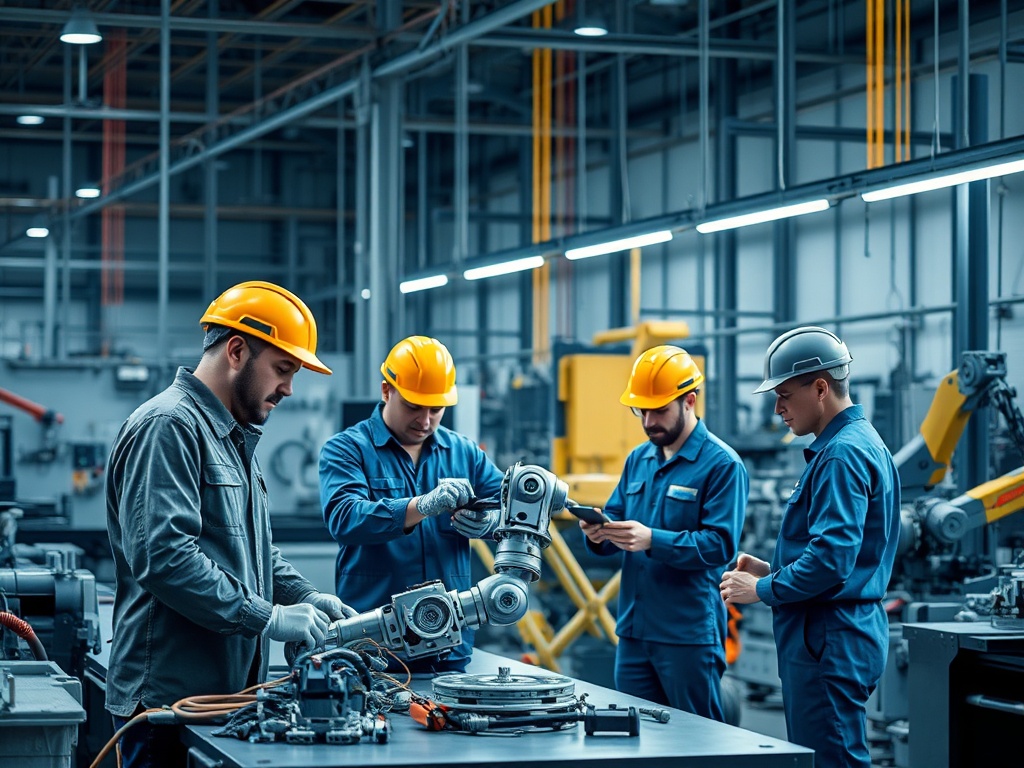Blue-Collar Jobs: The Resilient Workforce in an AI-Driven Era Blue-Collar Jobs: The Resilient Workforce in an AI-Driven Era
As we navigate through the 21st century, the rapid advancement of technology, particularly artificial intelligence (AI), has transformed industries across the globe. While much attention is given to how these changes affect white-collar jobs, blue-collar workers—those engaged in manual labor or skilled trades—are also experiencing significant shifts. In this evolving landscape, blue-collar jobs are proving to be not only resilient but also essential for sustaining economic stability and growth.
The Role of Blue-Collar Workers
Blue-collar workers encompass a wide range of professions including electricians, plumbers, construction workers, factory operatives, and truck drivers. These roles have traditionally been viewed as foundational to the economy; they provide critical services that keep society functioning smoothly. Despite advances in automation and AI technologies that can perform certain tasks more efficiently than humans, many blue-collar jobs require a level of dexterity, problem-solving skills, and human interaction that machines cannot replicate.
For instance, while automated systems may handle repetitive manufacturing tasks or data entry functions with ease, complex repairs or installations often necessitate on-site assessments and personalized customer service—areas where human expertise shines. Furthermore, as infrastructure ages and new buildings rise to meet growing populations’ needs, demand for skilled tradespeople remains robust.
Adaptation Through Upskilling
In response to technological advancements like AI integration into various sectors—including logistics management systems in warehouses or predictive maintenance tools in manufacturing—the workforce is adapting through upskilling initiatives. Many organizations recognize that investing in their employees’ development not only enhances productivity but also ensures job security amidst changing demands.
Training programs focused on digital literacy are becoming increasingly prevalent among blue-collar employers. Workers are learning how to operate sophisticated machinery equipped with AI capabilities or utilizing software tools designed for project management and communication. This fusion of traditional skills with modern technology enables them to remain competitive while expanding their career opportunities within their fields.
The Importance of Human Touch
While AI can streamline processes and improve efficiency in many sectors—from scheduling deliveries to optimizing production lines—it lacks the emotional intelligence inherent in human interactions. Blue-collar roles often involve teamwork and collaboration where interpersonal relationships play a crucial role; thus far beyond mere technical abilities lies an essential human touch.
Consider healthcare support roles such as nursing assistants or home health aides who provide care tailored specifically toward individual patients’ needs—an area where empathy cannot be replaced by algorithms alone. Similarly, construction teams rely heavily on effective communication among members during projects requiring coordination under tight deadlines—a task best suited for humans rather than machines lacking nuanced understanding.
Future Prospects for Blue-Collar Employment
Looking ahead into an increasingly automated future raises questions about job displacement versus job evolution within blue-collar sectors. Experts agree that while some positions may become obsolete due to technological innovations—including autonomous vehicles affecting trucking routes—new opportunities will arise alongside emerging industries driven by sustainability efforts (like renewable energy) which will create additional demand for skilled laborers capable of operating advanced equipment safely.
Moreover—and perhaps most importantly—the need for hands-on work isn’t diminishing anytime soon; our reliance on infrastructure means there will always be vital physical tasks needing completion regardless of advancements made elsewhere within corporate environments dominated by tech-driven solutions.
Conclusion: A Strong Foundation Amid Change
The narrative surrounding blue-collar employment must evolve alongside advancements brought forth by artificial intelligence rather than diminish its value altogether; these hardworking individuals form the backbone upon which economies stand strong today—and tomorrow! By embracing continuous learning opportunities while highlighting unique skill sets they possess distinct from machines’, we can ensure this resilient workforce thrives amid ongoing change ushered forth through innovation without losing sight of what makes them irreplaceable contributors towards building better communities everywhere around us!



